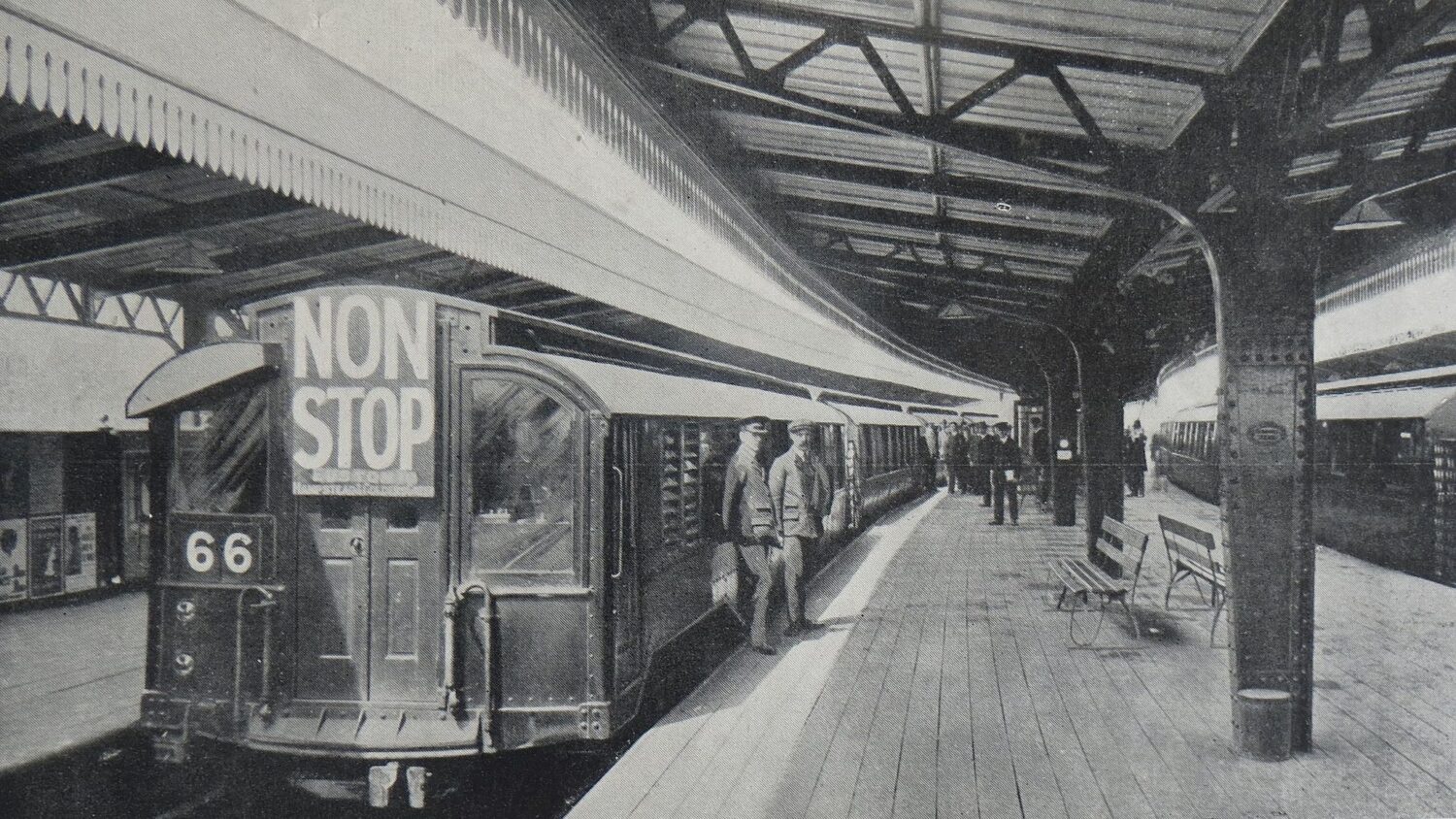On the right track
July marked the 90th anniversary of the creation of London Transport. It was a quintessentially Fabian project, writes Niall Devitt
By the turn of the 20th century the railways of the nation were at their zenith. Both locomotives and coaches were becoming works of exquisite mechanical perfection, a colourful railway vision famously immortalised in ES Nesbit’s Railway Children in 1905. With over 123 separate competing railway companies, this was the height of the laissez-faire competitive system, one watched over by the light-touch regulatory hand of the Board of Trade, which only really intervened after tragic events forced it to act.
This era memorably featured the first ‘ton’ – that is, a speed of 100mph – for a steam locomotive when the GWR’s City of Truro charged down Wellington Bank, Somerset on 9 May 1904. Although a celebrated moment, the Great Western Railway knew full well that the public would view such high-speed exploits as reckless, with those on board sworn to secrecy by the company’s management at Paddington. The intense competition for a finite amount of traffic would end in tragedy two years later, as a series of high-speed derailments cast rampant competition on the nation’s railways in an unfavourable light. At Salisbury on 1 July 1906, 28 passengers were killed on the London and South Western Railway, with the accident the result of an utterly pointless race to reach London. Next came a mysterious high speed derailment at Grantham on the Great Northern Railway, with 14 killed, while a similar derailment the next year at Shrewsbury on the London and North Western Railway would claim a further 18 lives. This shocking series of accidents was blamed in the press on an underregulated and overly competitive railway system. Questions began to be asked whether private ownership was the most efficient and safe way to run a national railway system, a situation increasingly at odds with other European nations. By 1913 the number of workers killed or seriously injured on the railways in Britain had increased to over 30,000 a year.
Increasingly it was felt – and not just by socialists and the rail workers’ unions – that some form of public ownership was the sensible long-term solution for the nation’s railways and especially for London’s financially struggling underground railways. As part of this emerging consensus, David Lloyd George as president of the Board of Trade would memorably advocate nationalisation at the official opening in 1907 of the Great Northern, Piccadilly and Brompton Railway, today’s Piccadilly line.
The shallow ‘cut and cover’ Metropolitan Railway had first opened in January 1863, with eventually a multitude of private companies operating services over what would become the modern Metropolitan, District, Circle and London Overground system of lines. The later deep-level electric tube lines of the capital rapidly sprung up in the capital over a 20-year period after 1890. All were private initiatives designed to compete directly with a multitude of horse-drawn and later petrol omnibus services, the existing Victorian suburban rail system, as well as new electric tram cars. The new lines struggled to pay dividends, while passengers proved extremely reluctant to frequent the new deep-level electric tube lines; a dark, noisy and smelly foreign environment in the bowels of the metropolis.
In April 1906, the financier and new chairman of the troubled UERL, Sir Edgar Speyer, along with his deputy Sir George Gibb, dined with the highly politically influential early Fabians Beatrice and Sidney Webb at their home in Hampstead to discuss the feasibility of the UERL group of companies being taken over as a public company by the London County Council. In return for an immediate and substantial financial input of £5m, County Hall would gain complete ownership of the underground in 30 to 40 years’ time, while Speyer also offered to repay the loan at a generous 4 per cent interest. He was in effect offering public ownership tomorrow, if the LCC would intervene to save the day. To the Webbs, the proposal was still well wide of the mark given the scale of the problem. However, their discussion proved to be far from the last time when Fabian thought would shape the future of London’s transport.
A ‘Railway Nationalisation Society’ supported by the trade unions had already gained adherents in the 1890s, while the widely read 1912 book The Case for Railway Nationalisation by a Fabian, Albert Emil Davies, had argued: “Owing to the absurd overlapping of the railway companies, with their ridiculous duplication of boards of directors, general managers, solicitors, auditors and the like, with unnecessary duplication of railway stations, rolling stock, with the employment of thousands of unnecessary officials…millions of pounds are wasted annually.” It is an argument that still has great resonance today with Britain’s shattered national railway system.
As for the Webbs, they were far from finished with the problems of London’s tubular railway system. They continued to mull over the issues, concluding correctly that unfettered competition, with omnibus, tram and train all at war with each other, lay at the heart of the problem. If all could be welded together, or as it was later known, ‘integrated’ under the auspices of a publicly owned board, one not burdened by being beholden to acquisitive shareholders, a sensible and workable solution to the long-term transport needs of the capital could be found.
By being prepared to be pragmatic and willing to court all shades of political opinion, the Fabians won a hardworking and politically adept advocate for public ownership in the young MP for Hackney South, Herbert Morrison. As early as 1920 as leader of the London Labour party, he would demand that the government introduce a ‘transport board’ to cure the capital’s transport ills, a call he would repeat from the opposition benches until he entered government as minister for transport under the second Labour government of Ramsay McDonald in May 1929.
An astute Beatrice Webb observed in her diary in October 1929 that: “The only outstanding minister is Morrison, with his transport schemes”. In a statement in the Commons in December that year, Morrison declared he was preparing to apply public ownership to solve the problems of wasteful competition in public transport in the capital. The only genuinely radical policy of the second Labour government and a classic example of Fabian socialism, the plan was greeted with a ‘shudder’ by alarmed Conservative MPs. The organisation that would eventually emerge as the London Passenger Transport Board in July 1933 was quintessentially Fabian in its structure, a successful takeover of numerous competing private passenger operators all within a 50-mile radius of Charing Cross.
While Morrison did not expect private shareholders to become Fabian socialists overnight, this was never to be a Soviet-style ‘smash and grab’ nationalisation; instead, the minister was offering all shareholders a very reasonable compensatory deal in the form of a newly created LPTB shares.
It was still to prove a prolonged and bitter fight to get the legislation safely on the statute book, not helped by the collapse of the Labour government in August 1931. Luckily, Morrison’s careful cultivation of Liberal MPs would see his Liberal successor John Pybus finally secure royal assent in April 1933 for a modified version of Morrison’s original proposal. In all essentials Morrison’s Fabian thinking was still explicit in the framing of the legislation. In a series of lectures held at the LSE in early 1934, the vice-chairman of the board, Frank Pick, would reveal how much had been taken over by the LPTB: “Five railway companies, fourteen municipally owned tramway undertakings, three company-owned tramway undertakings, sixty-six omnibus and coach companies and the whole or part of not less sixty-nine other omnibus and coach companies.” In hindsight, given the scale of the task involved, as well as the unfavourable political and economic climate, it was an extraordinary achievement.
As many as 75,000 staff became state employees on 1 July 1933, on significantly better wages and with enhanced working conditions, and trade union recognition from day one. A deeply engrained safety culture permeated the entire culture of the new organisation. In addition, all staff had access to welfare services, staff development through excellent training and courses, and sporting, cultural and leisure pursuits.
A decade later, a once critical Times concluded: “London Transport can proudly boast of being the greatest urban transport system in the world…it has set an example to other public corporations offering essential services to the public, now or in the future.”
Morrison’s hopes for outright nationalisation of London’s and the wider nation’s transport services would finally be fulfilled in 1948. But sadly, his seminal achievement in creating London Transport has been largely lost in a sea of ink fetishising the Underground’s pioneering architecture and design. His was a successful, pragmatic Fabian approach that has subsequently been copied right across the globe, while a modern TfL contains the same DNA it had back in 1933. For those planning for a future Starmer government who want to tame out of control post-1979 private monopolies, once again in an unfavourable economic climate, there is much to be gained by looking at Morrison’s achievements.

